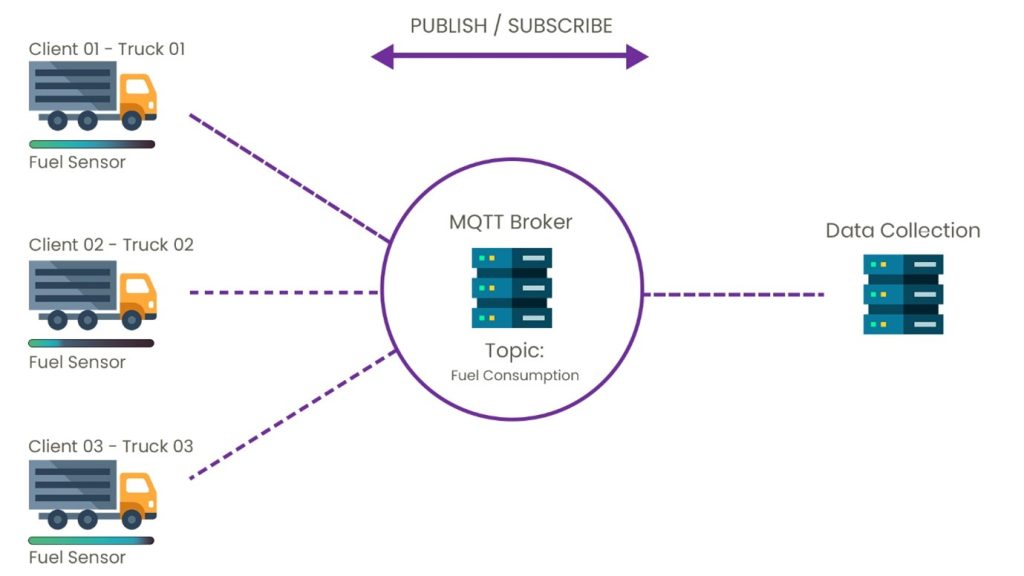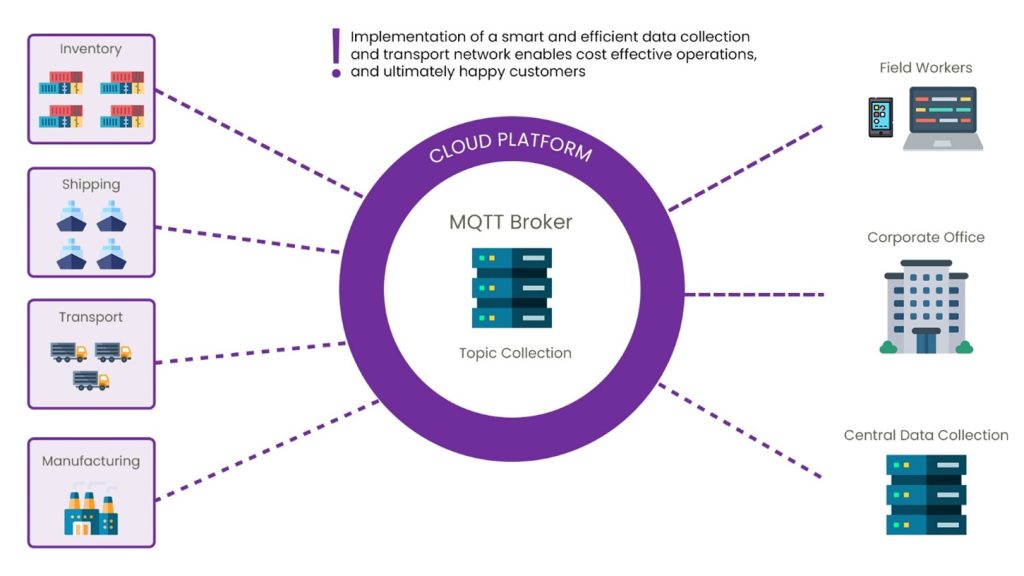Messaging Queue Transport Telemetry, or MQTT, is the backbone of several Internet of Things (IoT) applications. Aplicom T-Series and Silver Cloud service also utilize MQTT, as it provides easy integration to several network infrastructures. But what is MQTT, how does it work, and what are its applications?
MQTT in Brief
MQTT is a messaging transport protocol originally developed in the 1990s for the oil & gas industry. In its simplest form a MQTT network consists of a message broker and a client – though a network can have many brokers and clients.
Client(s) can either publish data or send requests to the broker. The broker acts as a central hub that enables the communication between clients. Anything that can connect to the broker is considered a client.
Below is an example diagram of a possible MQTT setup to follow fuel consumption at an imaginary logistics company. Each truck can be followed individually, or data can be compiled to get the overall fuel consumption of the fleet.

Benefits of MQTT
MQTT is a well-established and standardized protocol. Leading cloud IoT service providers, such as Amazon AWS and Microsoft Azure, use the MQTT protocol in their IoT Core and IoT Hub systems. There are also several other commercial and open-source MQTT solutions. This provides existing IoT infrastructure for easy telematics adoption for organisations of different sizes.
Data collection and distribution can be set up to answer client needs from the get-go with Aplicom T-Series plug-&-play units. MQTT enables smart, efficient, and user-friendly data collection, as well as the setup of mission critical alerts and metrics.
New units are easy to add to the system with minimal setup, providing excellent operational scalability. The MQTT broker doesn’t directly store data either, only the last message, providing an indirect source of additional security as well as light system requirements.
Any connections from clients must also fulfil additional security criteria, such as a matching unique device ID, username, and password or access certificate. MQTT also supports authorization controls. If a client fails any of the above checks it can be deleted or blocked from subscribing/publishing to a topic.
In a nutshell MQTT is an industry standard, easy to adopt, scalable and secure.
Applications
If there is a client that can produce readable data, it can be sent via the MQTT protocol. This makes MQTT an ideal solution for both small and large as well as single or multi-disciplinary organisations. The amount of data transfer can also be adjusted to best suit your needs and optimize costs. For more read our blog post What is enough data – How to reduce the cost of telemetry?
Above we saw an example of a simple transport company. Below you can see a simplified example of a multi-disciplinary company running MQTT.

MQTT can be implemented to different network configurations. Whether you have an existing company server, a cloud-based system, or are looking for a new light weight solution to suit your needs, the MQTT protocol can be incorporated into it – bringing the data you need to your hands.
Aplicom, MQTT and you
Aplicom Silver Cloud solution combined with Aplicom T-series telematics devices is a perfect way to start adapting your business needs to a real-time responsive data driven platform. Deployment and provisioning of devices to existing cloud services, or to an existing business MQTT broker is straightforward, fast, and secure – adding value to your business and your clients.
Oh, one last thing. Why is it called Messaging Queue if it doesn’t queue messages? This is simply a remnant from the IBM MQSeries product line under which one of the original developers of MQTT worked at.

Follow us on social media